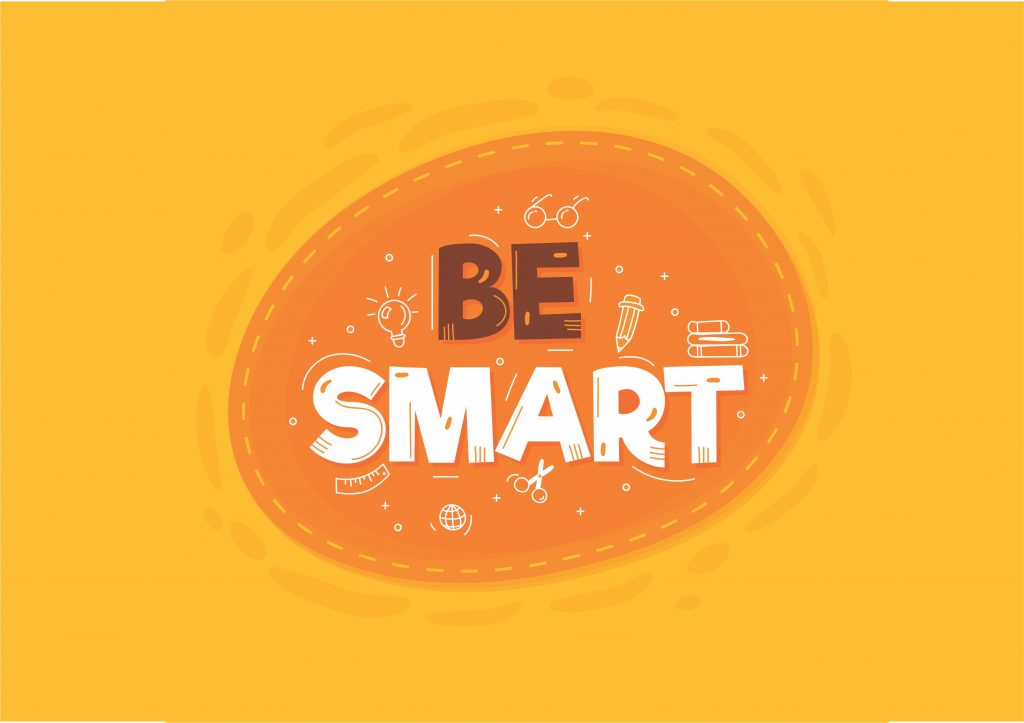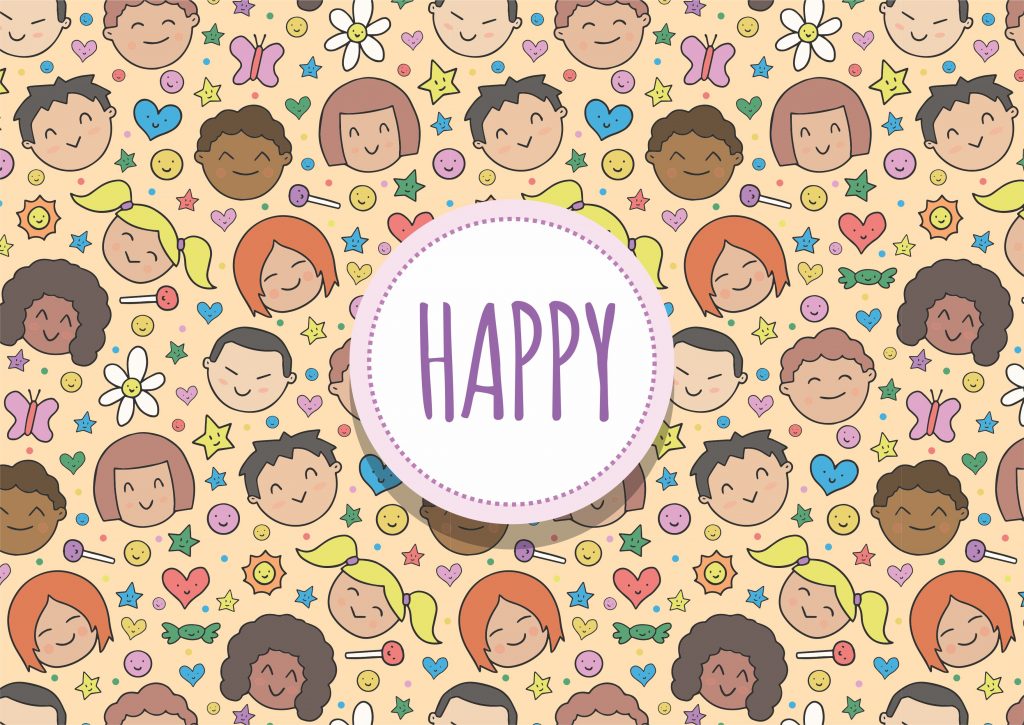
TECHNOLOGY in child development
Mrs G Haux, Head of Pre-primary
Seeing what experts are thinking about, can be inspiring. The one thing we know for sure about early childhood development is that there is always more to discover. Technology is an ongoing trend pretty much in every industry. It is a constant balance to decide how to teach with technology, while also teaching digital resilience as children are likely to interact with devices at home and school. Even with the proven effectiveness of technology use to enhance learning, we are left with a few questions: What role should technology play? What should we teach our children about using technology?
One of the most important elements to consider is how children are interacting with the technology, ensuring that new tools are developing positive behaviour.
Technology—or screen time—comes in these four main forms:
- Passive consumption: Watching a movie, reading and listening to music
- Interactive consumption: Playing games and browsing the Internet
- Communication: Video-chatting and using social media
- Content creation: Using devices to make digital art, music or video clips
How to use technology to your advantage
We can use technology in a purposeful way, discovering resources that meet the needs of children can greatly enrich the current material they are learning.
Technology allows us the ability to record, save, and share what children learned that day. Assistive technology can also be a helpful tool in communicating with or promoting the development of children with special needs or disabilities.
There are numerous benefits associated with introducing technology to young children. It helps children build their academic and social skills as well as teach them how to navigate digital devices which will serve them well the future.
In today’s technology-heavy world, learning how to use it is a necessary life skill. When it comes to the question of how much technology to incorporate, no more than one hour per day at pre-school age is generally recommended.
Sources: https://www.rasmussen.edu/degrees/education/blog/3-ongoing-trends-early-childhood-education-impact-you/
https://www.kaplanco.com/ii/technology-for-preschoolers
https://info.athenacareers.edu/blog/why-is-technology-important-in-early-childhood-education

HELP!
My child is struggling to read
Mrs L Stegen, Head of Foundation Phase
The responsibility for a child who finds it difficult to read, can be overwhelming. We know that the child’s future options largely depend on their ability to read and write, and we want to help the child reach their full potential. How can this be done?
Firstly, we need to identify the struggling reader. Here are some signs to look out for:
- Slow and effortful reading: Are they finding it hard to read a book meant for their level?
- Frequent reading errors: Do they often replace, add or delete words while reading?
- Text tracking difficulties: Does the child lose his/her place, skip lines, or read words back to front?
- Not understanding the text: Does he/she find it hard to answer questions about what they have just read? Simple questions can be asked to assess reading comprehensions: who, what, where, when and why.
- Avoidance behaviour: Are they reluctant to read?
Once you have become certain that the child does indeed have a reading problem, it is helpful to pinpoint the cause. There are two main types of reading problems: word-reading difficulties and reading comprehension difficulties. The child would experience either of these, or they might have a bit of both, in which case we would say they have mixed reading difficulties.
A child with word-reading difficulties usually does well in situations in which information is presented verbally. They love class discussions and listening to the teacher reading out loud. They can answer difficult comprehension questions accurately and thoughtfully, especially if the text content has been taught orally. However, word-reading difficulties will show up in poor spelling, difficulty in decoding unfamiliar words and difficulties with reading fluency. This type of problem might only present itself once the child has advanced beyond the first grades, because they are then expected to work more independently with texts.
A child with reading comprehension difficulties is likely to have strong spelling skills and good foundational reading skills. They know the phonics and can decode words outside their vocabulary. However, once they need to answer comprehension questions about the text, their difficulty comes to the fore. This is also the case when they are required to listen to instruction. Possible language weaknesses will also compromise reading fluency.
A child with mixed reading difficulties has below average decoding abilities, struggles with reading comprehension even if they have been able to decode the words and finds it hard to read fluently. Such a child, however, usually has strengths in specific areas of language or reading. If they have a strong interest in specific topics, they might have considerable background knowledge and motivation to read within this field.
Knowing the child’s type of reading difficulty is the first step to finding the right kind of help for them. In the next article, we will look at the different types of reading intervention strategies that can be adopted in our search for meeting the individual needs children might face.
Adapted from: Common Types of Reading Problems and How to Help Children Who Have Them, by Louise Spear-Swerling, accessed through Reading Rockets.
5 Ways to identify Reading Problems in Children, by Kids First, accessed through Kids First Children’s Services.

DECREASING attention spans
Mrs E Gouws, Head of Intermediate Phase
The human attention span has dropped to just eight seconds, down from 12 seconds in 2000. In just two decades, our attention span has fallen to one second lower than that of a goldfish. This drop has largely been blamed on the nature of technology and the constant stimulation it offers. We have so much information available for us to consume and so little time to consume it in that our brains cannot keep up the with amount of information competing for that attention.
Generation Z are individuals born in late 1990s and early 2000s who are ‘Generally…tech-savvy, pragmatic, open-minded, individualistic but also socially responsible … An Hodgson (https://www.merriam-webster.com/). To hold the attention of Gen Z’s and break through the eight second barrier, the content presented to them must have excellent visuals and dialogue along with an interesting storyline. It needs to spark emotions from readers, so that they feel a deeper connection to the content. They care more about the narrative and the visual nature of the content that interests them than other age groups. When they have material in front of them that is highly visual and engaging, they have excellent potential to pay attention.
What is engaging (appealing) content?
It should be short and to the point. It should be snackable so that readers can quickly understand it. User-friendly content is split up into smaller paragraphs, snippets, quotes, statistics, or callouts which enables children to easily scan a page and digest the information quickly. Shorter rather than longer stories are the way to go. By shortening content and creating a more skimmable experience, you will retain the children’s attention longer.
These children want to be challenged, and they value interaction. For parents and teachers who learn how to engage with these children, they can present rewarding opportunities for growth.
Sources: https://www.bostondigital.com/insights/shrinking-attention-span-what-it-means-marketers
https://www.facultyfocus.com/articles/teaching-and-learning/generation-z-re-thinking-teaching-and-learning-strategies/
https://hospitalityinsights.ehl.edu/2021-education-trends
https://muckrack.com/blog/2020/07/14/how-declining-attention-spans-impact-your-social-media

OPEN PARENTS’ EVENINGS
Mr D van Straten, Head of Senior Phase
Looking back over the past term we are thankful for the large degree of normality we have experienced with learners at school. Routine timetables and assessment schedules were mostly followed, and learners mostly made good academic progress.
However, given the latest surge in national COVID-19 cases and the closing of numerous schools, one can only hope that this status quo will return and remain for as long as possible, especially since we are looking forward to several annual highlights such as Interhouse athletics and open evenings.
Open evenings are especially important for teachers since this is a time when we can connect with the parents and guardians of the learners we teach. COVID-permitting, the Senior Phase and FET parents’ meeting is planned for 23 July 2021. Please diarise this important date and try to attend, if possible. This may have to be a virtual meeting; we will keep you posted.
Making full use this important event will most likely benefit you, your child and your child’s teacher. According to Taylor (2019) and Shute et al (2011) parental involvement could be a strong predictor of academic success. Teachers also appreciate parent participation.
Through mutual collaboration we as teachers wish to assist every individual child experience an academically successful and happy school career. If not at this year’s open evening, at every open evening in the future!
Sources: Taylor, M. 2019. Top 10 Questions to Ask During a Parent Teacher Conference. Web: http://www.sylvanlearning.com/blog/index.php/top-10-questions-to-ask-during-a-parent-teacher-conference/
Shute, VJ. 2011. A Review of the Relationship between Parental Involvement and Secondary School Students’ Academic Achievement Web: https://www.hindawi.com/journals/edri/2011/915326/

MID-YEAR examinations are important
Mrs J Sibeko, Head of FET Phase
We all tend to put so much attention on the importance of end-of-the-year exams that we forget that mid-year exams are just as important.
“Mid-year exams play a significant role and should be taken as seriously as final exams,” says Peter Kriel, general manager at the Independent Institute of Education. Each exam plays a unique role as learners progress through high school, and in Grade 12 mid-year exams become even more significant since learners will use these marks to apply to higher education institutions.
The best way to support your child during the stress of revision and exams is to make home life as calm and pleasant as possible. Do not let your stress become their stress. It is important to get a good night’s sleep before an exam, so discourage your child from staying up late to cram. Make sure he/she eats a good breakfast on the morning of the exam.
Parents could do the following:
- Know your child’s entire exam schedule.
- Attach a copy of the examination timetable on the kitchen fridge.
- Help them to focus on the next day’s papers.
- It can be helpful to review the next paper. Simple questions, such as “What is up next?”, “Are there any compulsory sections?”, “Are there any predictable questions?” etc, can be useful in helping students devise their study schedule for the time available before the next exam.
- Help them to maintain a balanced daily routine. Ensure that your child maintains a proper balance between study and rest. After an exam, they need time to rest and recharge before they can do any beneficial study for the next paper. Remember that this is on average a two-week process and they need to be as sharp on the morning of their final paper as they are tomorrow. Late-night study sessions should be avoided.
- Create a great learning environment. A good atmosphere and comfortable learning space can lead to productive learning and revision. Ensure your child has what he needs to thrive, whether it is sufficient light and quiet, or a comfortable chair and the necessary stationery.
- Support them. Studying is not always fun or easy, so praise your children when they are working hard. Encourage rather than threaten, as children do not need even more stress during exams.
- Do not overhype the importance of any examination.
Make it clear to your kids that your love and regard for them is in no way dependent on how they perform in the examination. This affirmation is the best gift you can give them on the eve of their exams.
Sources: Claudia Swartzberg. CEO of Top Dog and Tech Company
Brian Mooney (Guidance Counsellor), originally published in the Irish Times

HAPPY children for life
Mrs A du Preez, Head of Academics
A happy, non-threatening classroom atmosphere enhances learning. The reason is simple: A happy child learns easily.
A learner from a happy home already has a great academic advantage because he comes to school with a clear mind – no hurts, grudges or bad conscience to blur and block his thinking. This is exactly where parents can contribute to their child’s education and success in life.
Parents may wonder how happy children can be raised in our mixed-up world of today. Here are a few tips:
- Encourage outdoor play. Running on the grass, digging in the ground, climbing trees etc. are good and healthy for children.
- Limit screen time. Have clear guidelines in place and put away devices during family activities.
- Children need to feel loved and never in the way. They enjoy spending quality time with their parents, however short it may be. Listening to children’s talk makes them feel understood, and such children will usually be open to correction.
- Assign chores. Children might not particularly enjoy washing the dishes, but by instilling the habit early in their lives, it will bring long term happiness.
- Have high but reasonable expectations. Studies show that children whose parents expect them to do their best, display more perseverance and excel academically.
- Teach self-control and at the same time, teach the child not to surround himself with many temptations. A fridge with healthy snacks would be a better idea than piles of sweets nearby.
- Help other people. Amy Morin puts it well: “Being kind to others can make your kids happier and happiness will make them kind. It’s a positive cycle that sets them up for a happier, healthier life.”
- It is often not big gifts that do the trick but rather learning to appreciate even the smallest things in life. The best way to cultivate gratitude, is to model it… and by the way, remember the vast difference between a forced “thank you” and meaning it genuinely.
Lastly, but most importantly: Pray with your children about their needs and thank the Lord together for His answers.
Sources: https://www.verywellfamily.com/how-to-raise-happy-kids-4176629
https://www.theworldcounts.com/happiness/you-learn-more-when-you-are-happy
